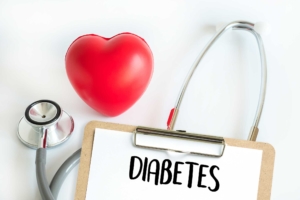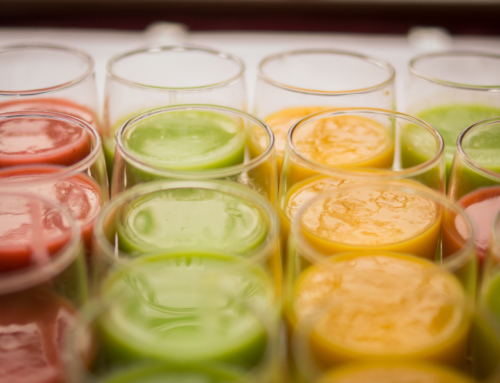
Diabetes is defined as a disease that results in too much sugar in the blood, also known as high blood glucose. You can have different forms/types of diabetes as well, those are defined as:
- Diabetes Type 1: A chronic condition in which the pancreas produces little to no insulin.
- Diabetes Type 2: A chronic condition that affects the way the body produces blood sugar (glucose). *This is the most common type.
- Prediabetes: A condition in which your blood sugar is high, but not high enough to be type 2 diabetes.
Knowing more about what defines the types above is a very important lesson to learn.
A Type 1 Diabetes is caused by a pancreatic event such as a virus, a sickness or an inborn failure which causes the pancreatic Beta cells (the only cells that we know that produce insulin) to die off. This event then causes a sharp or complete loss of insulin production. Without insulin, the glucose in the bloodstream cannot enter our cells rapidly. This will cause glucose to build up in the bloodstream and the cells to starve for glucose. This is now the most rarest type of diabetes. Currently, a cure for this condition is considered impossible. Since the cure would be that Beta cells regenerate and then they could once again produce insulin. These patients must use manufactured insulin to manage their condition.
Type 2 and prediabetes are the most common forms today. These differ from Type 1 in that the body can produce enough, or more than adequate insulin, to satisfy cellular needs of glucose. The problem then becomes that even with adequate if not more insulin, the cells do not respond and take the glucose in. When the cells do not take glucose in the blood sugar levels rise and become harmful to the body. High blood sugar can kill nerve cells, clog capillaries-causing blindness, kidney failure, gangrene, increase weight gain and increased cholesterol and triglycerides.
The differences between a Type 2 and Prediabetes is a specific threshold in your lab tests. If your fasting blood sugar (8 hours of fasting before the test) is between 100-125 mg/dL and/or an A1C of 5.7-6.4, and/or a Oral Glucose Tolerance Test that fall between 140 mg/dL-199 mg/dL, you are considered to have prediabetes. As soon as your lab results fall on 126 mg/dL or above fasting, and/or an A1C above 6.4, and/or an Oral Glucose Tolerance Test above 199 mg/dL, you are now diagnosed as having Type 2 Diabetes. (1)
In Prediabetes and Type 2 you have the same problem; the only difference is when your lab markers reach a threshold that was decided by a committee. Then when you finally reach the levels to get the diagnosis you now have a problem and there are prescriptions that now can be given.
Having well controlled blood sugar is a very important thing. Our bodies have over long periods of time, developed a very well inborn system that circulates and makes glucose so well that in times of feast and famine we can live and thrive. It will always work well when you eat whole foods such as animal, vegetable and fruit. The complex and remarkable abilities of the human body was built on the foundations of Mother Nature which created flesh, vegetables and fruit to more than adequately keep us thriving.
What is relatively new to our phenomenal physiology is things that may have been alive at one time, put through an industrial process, and having added agents to keep it from rotting on a shelf. I must give credit to the fact that we have done this very well and can feed our brothers and sisters these foods to ward off hunger, but it too has a price.
There is so much to talk about in this subject, but I am under a deadline and want to move on.
I want you to understand that Diabetes Type 2 (DT2) and Prediabetes are preventable and can be reversed by only you. It will always be preventable until you have been diagnosed. I will clarify that if you understand how your body works and you are willing to make changes to allow it to heal and fix itself, you will have your best start to plant and harvest your health.
The key is that you need to know how your body works so you can navigate through the copious amounts of information and develop a working knowledge of how your body functions. If you do not have a working knowledge of how your body functions then you cannot get context to the floods of memes, facts, articles, snippets, blogs and lectures. What I mean by a working knowledge is that it’s a lifetime of study carried out at your leisure that helps you understand a little more than when you started. The definition is inspired by Mark Twain, my life and the great patients that I am blessed to treat.
So go to www.sourcehealthcenter.com and look up resources and the “Eating Well” sheet is the most basic outline of how to help you regulate blood sugar. If you are hesitant to do it then don’t. Talk to your physician and you can decide what is best to do for you.
References:






